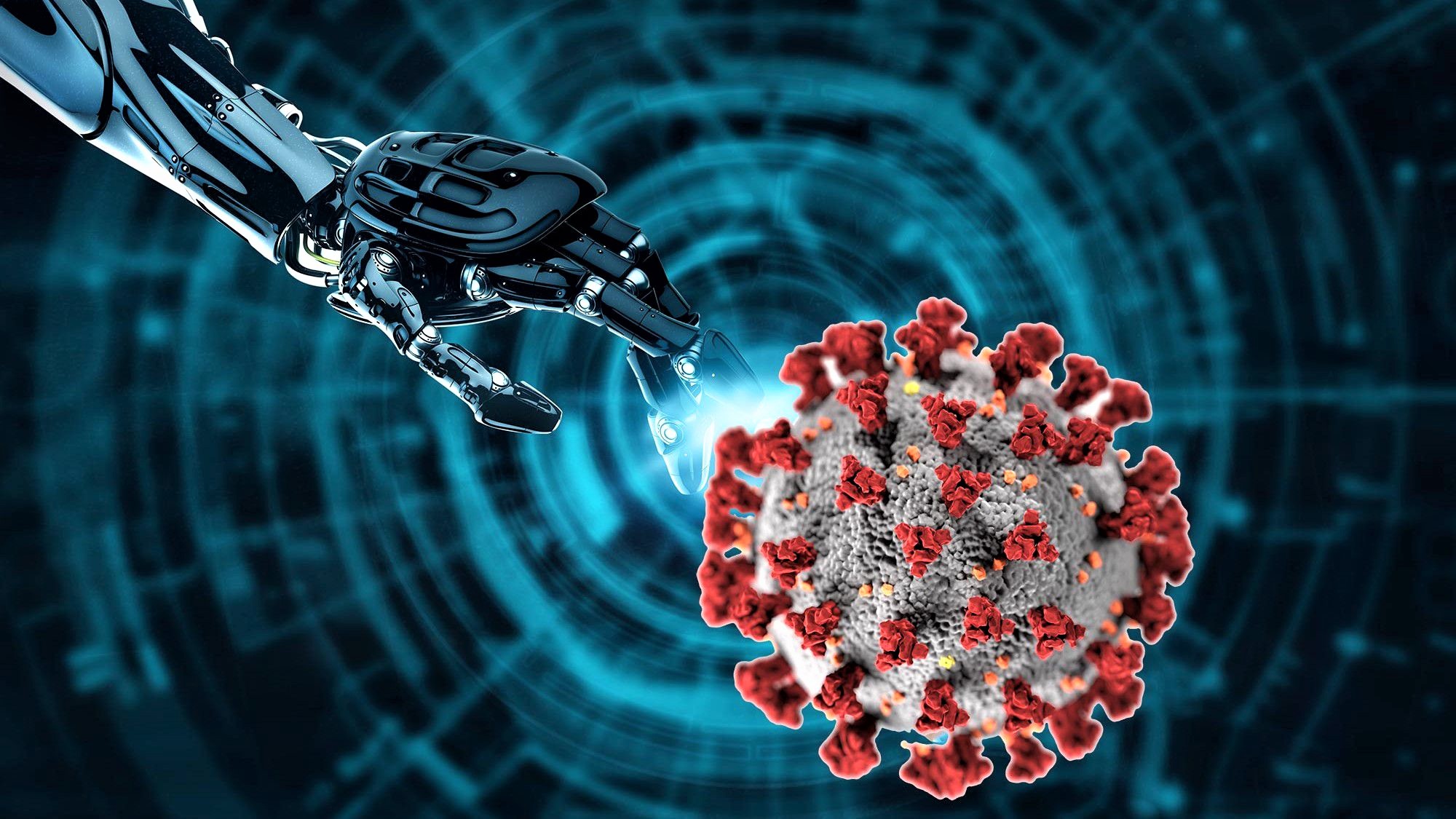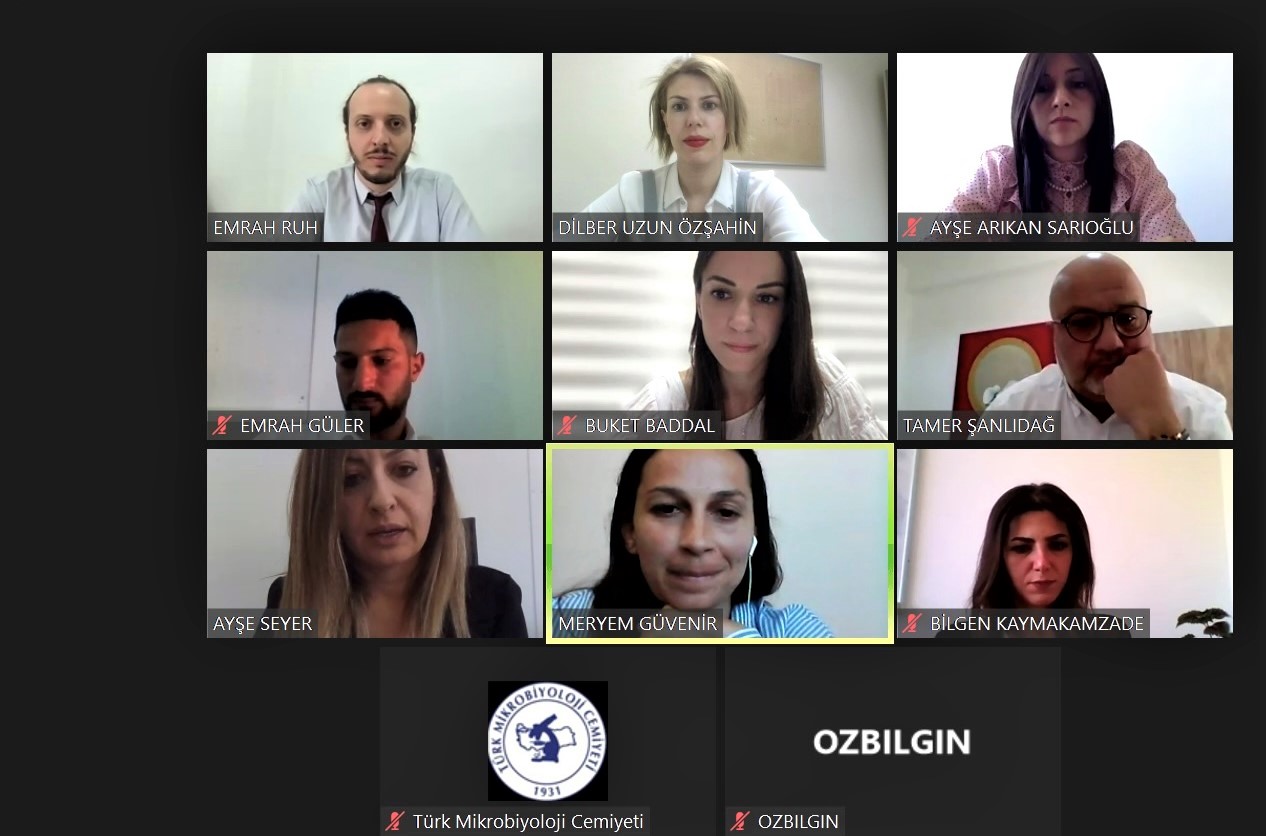
With the event organized by the Turkish Microbiology Society and the TRNC Microbiology Platform, the areas of use of “artificial intelligence” and mathematical modeling applications in microbiology and health were discussed.
The usage areas of “artificial intelligence” in microbiology were discussed with the event organized by the Turkish Microbiology Society in cooperation with the TRNC Microbiology Platform within the framework of the webinars. In the event, which was held with the participation of over 150 healthcare professionals and microbiologists from Turkey and the TRNC, the presentations made by researchers from the Near East University attracted great attention by the participants.
TMC-TRNC Microbiology Platform, one of the working groups of the Turkish Microbiology Society, shared information and developments with the microbiology community, including the applications of artificial intelligence technology used all over the world during the pandemic process in the diagnosis of infectious diseases in the TRNC, and the advantages it offers in the field of health.
All aspects of “artificial intelligence” in microbiology were discussed
In the event moderated by Near East University Faculty of Medicine Lecturer Assoc. Prof. Dr. Emrah Ruh and Cyprus International University Faculty of Medicine Lecturer Assist. Prof. Dr. Ayşe Seyer, the presentations were carried out as follows; Assoc. Prof. Dr. Dilber Uzun Özşahin “Artificial Intelligence and Its Applications in the Field of Health”; Assoc. Prof. Dr. Bilgen Kaymakamzade “Mathematical Models in Medicine”; Assoc. Prof. Dr. Ayşe Arıkan Sarıoğlu “A New Approach in Microbiological Diagnosis: Multi-Criteria Decision Making Theory”; Assoc. Prof. Dr. Meryem Güvenir “Diagnosis of Mycobacterium tuberculosis with Artificial Intelligence Model in Clinical Mycobacteria Laboratory: Preliminary Study Report”; Assoc. Prof. Dr. Buket Baddal “Can We Accelerate the Diagnosis of COVID-19 RT-qPCR Using Artificial Intelligence?”; Dr. Emrah Guler “The Use of Artificial Intelligence in Diagnosis ofPlasmodium spp”.

The prevalence of artificial intelligence in the medical field is increasing day by day.
Artificial Intelligence-based computer systems have a wide range of uses in the field of medicine. These methods are most commonly used in diagnosis, treatment and drug development, as well as in the fight against COVID-19.
Artificial Intelligence, with a simple definition, is explained as outputting a large number of data using some algorithms and solving the problem through the process of algorithms. Artificial Intelligence-based methods today are used in clinical microbiology as well as in areas such as cardiology, endocrinology, nephrology and gastroenterology. In microbiology, these methods show promise for purposes such as microscopic diagnosis, evaluation of growth in culture, prediction of antimicrobial resistance, and strain typing.
Prof. Dr. Tamer Şanlıdağ: “The application of artificial intelligence-based methods in multidisciplinary studies will open new horizons in the field of Microbiology.”
Near East University Acting Rector Prof. Dr. Tamer Şanlıdağ stated that artificial intelligence-based systems will guide science and that these methods can be used for the diagnosis of infectious agents in clinical microbiology laboratories in the future. Emphasizing that these methods also contributed to the control of the COVID-19 pandemic, Prof. Dr. Şanlıdağ stated that increasing the cooperation between research centers and applying artificial intelligence-based methods in multidisciplinary studies will bring an innovative approach to the field of Microbiology.
Stating that mathematical modeling, which is as important as artificial intelligence applications, was also discussed at the event, Prof. Dr. Şanlıdağ said, “Especially our experience in the COVID-19 process has revealed that mathematical modeling has yielded eye-opening results in the monitoring and control of epidemic diseases. At the event, we shared our experiences with the scientific world about the mathematical models we applied to monitor COVID-19 in the TRNC.”